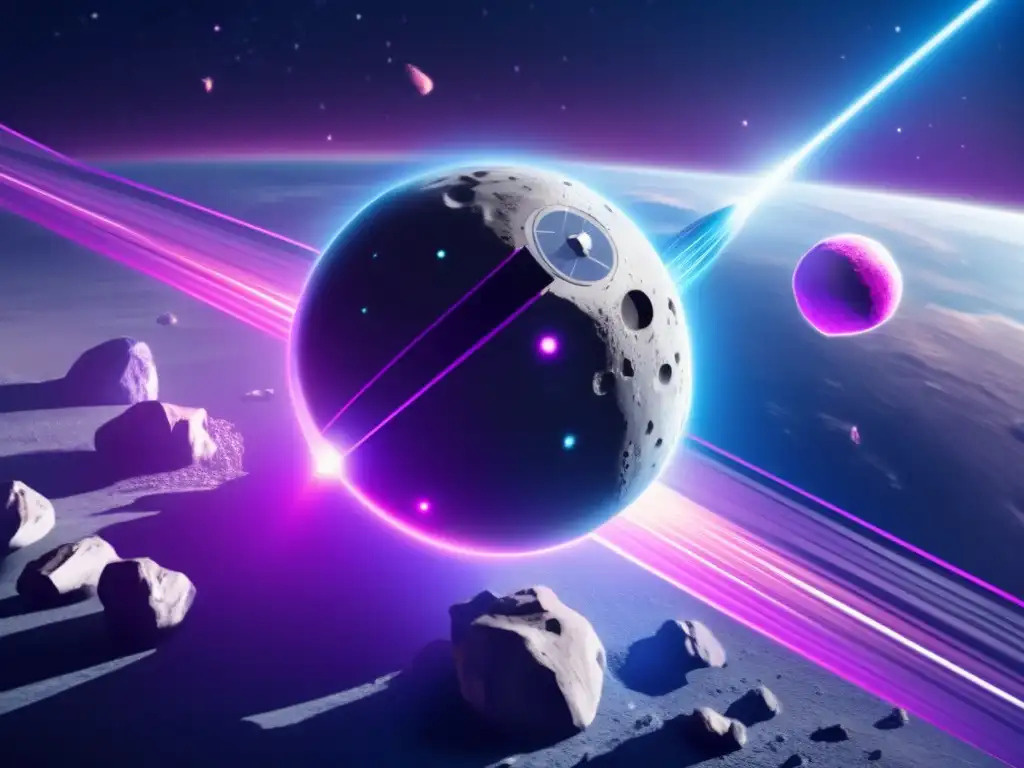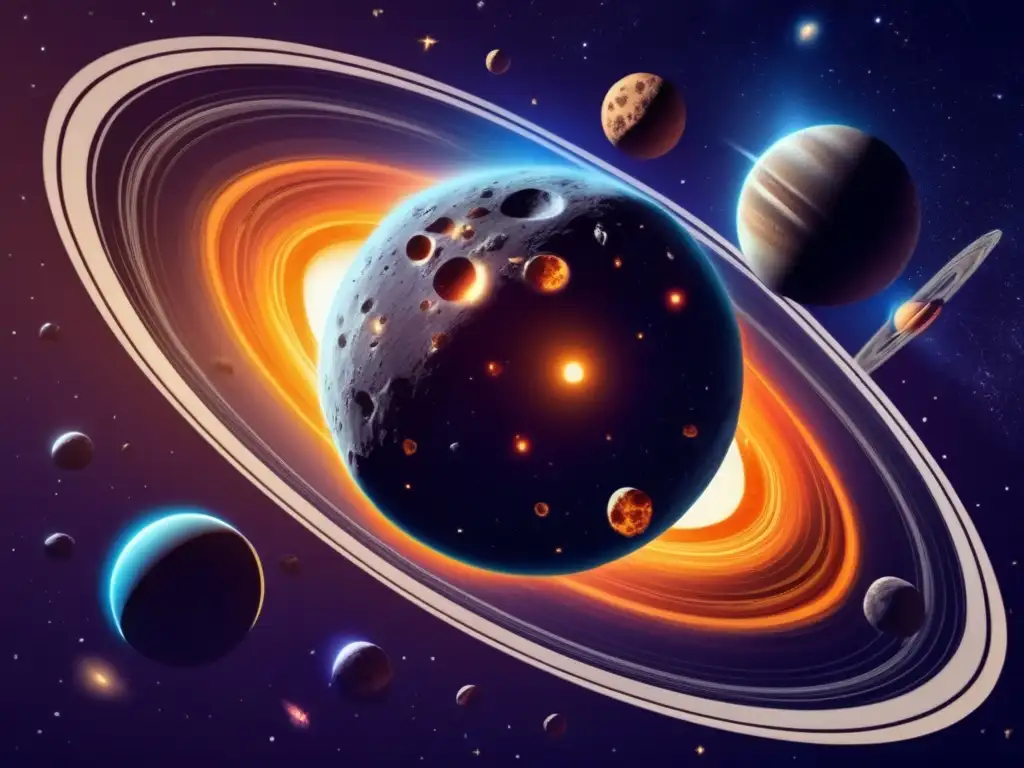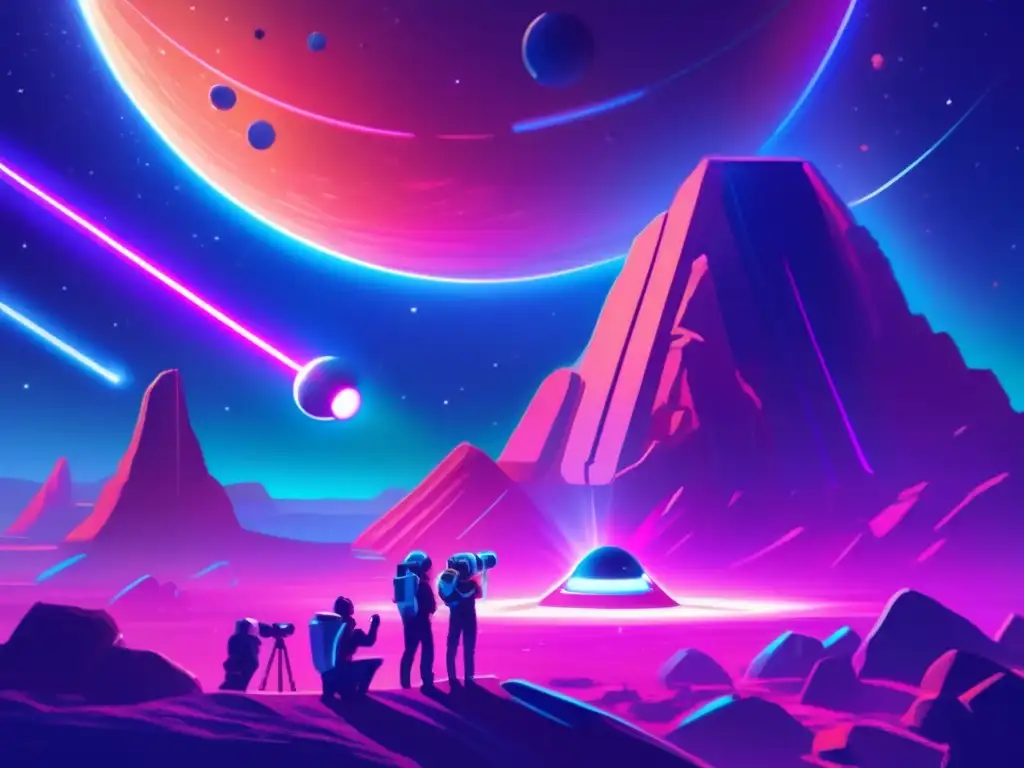Internet Resources For Aspiring Asteroid Observers

Introduction
Welcome to the fascinating world of asteroid observation! For those interested in studying and observing asteroids, there are numerous internet resources that provide valuable information, tools, and guidance. In this article, we will explore some of the top online resources that can help aspiring asteroid observers deepen their knowledge and enhance their observation skills.
International Astronomical Union (IAU)

IAU Minor Planet Center
The IAU Minor Planet Center (MPC) is the global hub for asteroid and comet information. It provides a comprehensive database of all known asteroids, their orbits, and physical characteristics. The MPC also coordinates and publishes observations submitted by amateur astronomers and professionals alike. Aspiring observers can access this database to find detailed information about specific asteroids, observe their positional data, and contribute their own observations if they wish.
IAU Working Group for Near-Earth Objects
The IAU Working Group for Near-Earth Objects (NEOs) focuses on the study and monitoring of asteroids and comets that come within close proximity to Earth's orbit. Their website offers up-to-date information on newly discovered NEOs, their orbital parameters, and potential impact risks. Aspiring observers can find valuable resources for tracking and monitoring NEOs, including software tools, observational techniques, and data analysis methods.
IAU Commission F3: Near-Earth Objects
IAU Commission F3 specializes in promoting the study and understanding of near-Earth objects. Their website hosts a wealth of scientific articles, research papers, and conference proceedings related to asteroids and their impact on Earth. Aspiring observers can access these publications to gain in-depth knowledge about asteroid characteristics, composition, and potential hazards.
Astronomy Binoculars and Telescopes

Astrophotography and Observational Astronomy Guide
For those interested in using astronomy binoculars or telescopes to observe asteroids, this comprehensive guide provides practical tips and techniques. It covers topics such as choosing the right equipment, setting up and aligning telescopes, finding asteroids in the night sky, and capturing high-quality images. Aspiring asteroid observers can benefit from this guide to enhance their observational skills and capture stunning images of these celestial objects.
Online Telescope Services
Several online platforms offer access to remote telescopes for astronomical observations. These services allow aspiring observers to remotely control telescopes located around the world, enabling them to observe asteroids and other celestial objects from the comfort of their own homes. Users can schedule observation sessions, select specific asteroids for study, and receive the resulting images and data for further analysis.
There are several smartphone apps available that can assist aspiring asteroid observers in locating and identifying asteroids in the night sky. These apps provide real-time asteroid positions, visibility information, and light curves. Some apps even offer augmented reality features that overlay asteroid data on the camera view, making it easier to locate and track them.
Citizen Science Projects

The Zooniverse: Asteroid Zoo
The Zooniverse is the world's largest platform for citizen science projects, and the Asteroid Zoo is one of their most popular collaborations. By participating in this project, aspiring observers can help identify and analyze asteroids in images taken by professional surveys. Users classify asteroid candidates, assist in the removal of false positives, and contribute to the discovery of new asteroids.
AsteroidWatch
AsteroidWatch is a NASA citizen science project that enables amateur astronomers to contribute their asteroid observations. Participants can submit their asteroid detections and astrometric measurements, which are crucial for refining asteroid orbits. The data collected through this program helps improve our understanding of asteroid properties and enhances our ability to predict their future paths.
Spaceguard
Spaceguard is an international project focused on identifying and tracking potentially hazardous asteroids. They provide opportunities for citizen scientists to get involved through collaboration with professional astronomers. By participating in Spaceguard, aspiring observers can assist in the search for new asteroids and contribute to the ongoing efforts to protect Earth from potential impact events.
Frequently Asked Questions

-
How can I contribute my observations to professional organizations like the IAU?
The IAU Minor Planet Center provides guidelines and submission procedures for amateur observers who wish to contribute their asteroid observations. Visit their website and follow the instructions to submit your valuable data.
-
What are some recommended tools for astrophotography of asteroids?
If you are interested in capturing images of asteroids, consider investing in a telescope with a motorized mount for precise tracking. Additionally, a digital camera or dedicated astrophotography camera, along with software for image processing, can help you achieve high-quality results.
-
How can I determine the visibility of specific asteroids from my location?
Online resources such as asteroid visibility calculators or smartphone apps can provide you with information about the visibility of specific asteroids based on your location, date, and time.
-
Are there any online courses or tutorials available for aspiring asteroid observers?
Yes, several online platforms offer courses and tutorials on asteroid observation and astrophotography. Websites like Coursera and Udemy provide a wide range of astronomy-related courses that cater to beginners as well as more advanced learners.
-
How can I get involved in asteroid detection and characterization projects?
Citizen science projects such as the ones mentioned earlier, like the Zooniverse's Asteroid Zoo and NASA's AsteroidWatch, provide opportunities for amateur astronomers to actively contribute to asteroid detection, tracking, and characterization efforts.
Conclusion
By leveraging the internet resources available for aspiring asteroid observers, you can deepen your knowledge, improve your observational skills, and actively contribute to the study and understanding of these mesmerizing celestial objects. Whether through accessing extensive databases, participating in citizen science projects, or using advanced tools and techniques, the online world offers endless possibilities for those fascinated by asteroids. Embrace the adventure, share your observations, and continue exploring the wonders of our cosmic neighborhood!
Remember to engage with www.asteroidrealm.com by subscribing, sharing this article on social networks, and leaving your thoughts and experiences in the comments section. Your contributions and interactions help foster a vibrant community of asteroid enthusiasts. Thank you for your time and happy observing!
Additional Resources

For further reading and exploration, here are some additional resources related to asteroid observation:
- IAU Minor Planet Center
- NASA's Center for Near-Earth Object Studies
- The Zooniverse: Asteroid Zoo
- AsteroidWatch (NASA)
- Spaceguard
 The Joy Of Sharing Your Asteroid Observations With The World
The Joy Of Sharing Your Asteroid Observations With The World How To Create A Star Party Focused On Asteroid Observation
How To Create A Star Party Focused On Asteroid ObservationIf you want to discover more articles similar to Internet Resources For Aspiring Asteroid Observers, you can visit the Telescopes and Asteroid Observation category.
Leave a Reply

Articulos relacionados: